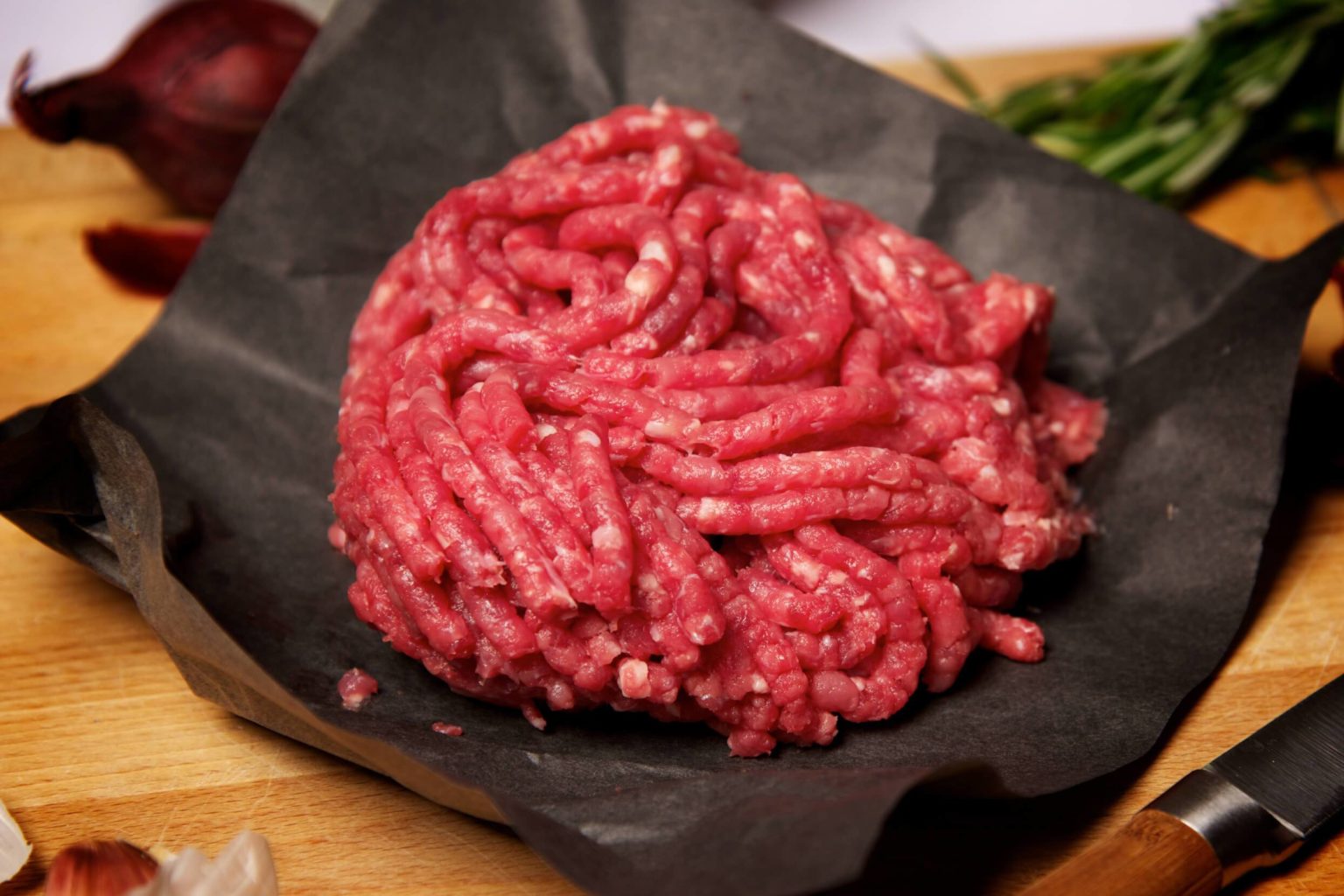Almost everyone has heard of ground beef. It’s what you use to make meatballs, burgers, chili, and many other foods. Its easy enough to find this meat at any supermarket or butchers shop. Whether or not its healthy for you comes down to its fat-to-protein ratio. You can make your own ground beef to fit your diet, which is the best thing about it.
Ground beef is an excellent source of protein, B vitamins and iron. To stay healthy, choose ground beef that is 95% lean to cut down on your fat and saturated fat intake.
Can Minced Beef Actually Help You Lose Weight?
When trying to slim down, a common question is what types of meat can support weight loss goals. Lean proteins like chicken breast and fish often top the list of weight-loss-friendly foods. But what about heartier red meats like minced beef? With careful portioning and preparation, minced beef can be part of a healthy diet and may even aid weight management.
Defining Minced Beef
First, let’s clarify what exactly minced beef is. Also called ground beef, minced beef is made from beef trimmings left over after steaks roasts and other cuts are removed from the carcass. The trimmings are run through a grinder to break down the meat into smaller pieces resulting in the versatile minced beef we buy at the grocery store.
Depending on the fat content, minced beef is categorized as lean (90-95% lean) or regular (80-85% lean). When possible, choose 90-95% lean minced beef to limit fat and calories while still enjoying the nutritional benefits of beef.
Benefits of Minced Beef for Weight Loss
Here are some of the key ways that minced beef can support a weight loss diet when consumed in moderation:
-
Rich in protein: A 100g serving of lean minced beef provides around 25g of protein. Protein increases satiety, helps retain muscle mass when losing weight, and requires more calories for the body to metabolize than carbs or fat.
-
Versatile ingredient: Minced beef can be used in many healthy recipes like lettuce wrapped burgers, meatballs with zoodle noodles, and stuffed peppers or mushrooms replacing higher carb fillers like rice or quinoa.
-
Source of iron: Minced beef provides around 15% of your daily iron needs per serving. Iron carries oxygen to muscles, boosting your metabolism and energy for workouts.
-
Contains zinc and B vitamins: These nutrients play key roles in metabolic function, immunity and energy levels to help your body function optimally.
-
Lower in fat than other cuts: While fattier than poultry or fish, 90-95% lean minced beef is significantly lower in saturated fat than ribs, brisket, or other beef cuts.
Potential Drawbacks of Minced Beef
Minced beef does come with some cautions regarding its role in weight management:
-
High in calories if overeaten: At nearly 300 calories per 100g, minced beef is quite energy dense. Portion control is key.
-
Lacks fiber and nutrients found in plants: Pair with a vegetable side for balanced nutrition.
-
May contain added sodium: Check labels and limit sodium intake which can cause fluid retention.
-
Higher in saturated fat than poultry: Choose 90-95% lean and avoid cooking methods that add more fat like frying in oil.
-
Red meat link to certain cancers: Limit intake to a few times per week as recommended by health authorities.
How to Incorporate Minced Beef into a Weight Loss Diet
Here are some tips for enjoying minced beef as part of a healthy weight loss regimen:
-
Watch your portions and enjoy no more than 150-200g cooked, a few times per week. This provides around 25-35g of protein.
-
Bulk up dishes by adding lots of low calorie vegetables like mushrooms, onions, tomatoes, and greens.
-
Skip the bun on burgers, and use lettuce leaves or Portobello caps instead.
-
Bake meatballs and skip frying. Use panko breadcrumbs versus higher fat crackers or cheese fillers.
-
Fill peppers, mushrooms or zucchini boats in place of pasta. Top with tomato sauce versus heavy cheese or cream.
-
Make chili with extra beans and veggies and just a small amount of minced beef for flavor.
-
Avoid fatty sauces. Opt for salsa, chimichurri or curry-based sauces for added flavor without the added fat.
The Verdict on Minced Beef and Weight Loss
Overall, minced beef can be incorporated into a diet geared towards weight loss when used properly. Stick to lean 90-95% fat versions, keep portions in check, and pair with plenty of non-starchy vegetables for a well-balanced calorie controlled meal. While not as protein-packed and low in saturated fat as poultry or fish, minced beef provides a nutritious variety that can support your slim-down goals in moderation. Just be mindful of your total calories for the day to create the necessary deficit for ongoing weight loss.

Ground Beef: Good or Bad?
Ground beef often gets a bad reputation compared to other cuts of beef. Many people associate ground beef of any type with leftover meat products, which means that you could get a range of desirable or undesirable cuts in this product. The worst part about ground beef for most people is its fat content.
Video of the Day
Whether or not you want your meat to be fatty is based on your preferences and diet. However, you should consume animal fats in moderation. Foods made from red meats, like ground beef, contain saturated fat, which can raise your cholesterol and be bad for your heart if you eat too much of it. According to the American Heart Association, you should limit your saturated fat consumption to about 13 grams per day.



Ground beef can vary substantially in fat and protein content. The majority of ground beef is always protein (lean meat). Its fat content can also range from as little as 5 percent to as much as 30 percent. This enormous difference is part of the reason ground beef has such a bad reputation. It can be hard to know what youre getting when you buy this product.
Downsides to Eating Ground Beef
Lean ground beef has the most nutrients and the least amount of saturated fat. It is 95% protein and 5% fat. From a nutritional perspective, this is definitely the best type of ground beef available. But this kind of ground beef is easy to overcook and doesn’t taste as good as other kinds because it doesn’t have much fat.
This means that despite its health benefits, only 1 percent of sales can be attributed to this type of healthy ground beef. A total of just 18 percent of sales consist of ground beef made of 90 to 95 percent protein and 5 to 10 percent fat. Unfortunately, fattier types of ground beef are more popular with consumers, which is clearly part of the reason people think ground beef is bad for you.
When you buy premade ground beef, you may be consuming multiple animals. This practice means that cross-contamination can occur more easily, increasing the likelihood of food-borne illness caused by bacteria like Salmonella, Listeria and Shewanella.
Fortunately, many disease-causing bacteria can be combated by thoroughly cooking ground beef until its well-done and choosing meats produced from animals that are raised in healthy environments. Natural antimicrobial strategies, using certain edible essential oils from herbs and spices, such as thyme oil, may also be useful in combating these bacteria. A 2015 study in the Journal of Food Processing and Preservation showed that these oils can even add other beneficial properties, like antioxidants, to your ground beef.
Wait… Ground Beef for Weight Loss?
FAQ
Can I eat beef and still lose weight?
Which ground beef is best for weight loss?
Is beef good for losing belly fat?
How to cook minced beef?
The best way to cook minced beef or rather, the way that brings out the most flavour is to first brown it. Here is how to go about it: Set the beef mince in a bowl. Mix the salt and seasoning on a small plate, stir this into the bowl with the mince, then combine. Next, heat a large skillet or pan on the stovetop under high heat.
What are the benefits of having beef?
Beef is an excellent source of protein having 26 grams per 100 grams of serve. Besides, it is rich in vitamin B-12, B-6 and iron. Consumption of beef must be encouraged to meet the protein requirements and overcome nutritional deficiencies like protein-energy deficiency, nutritional deficiency anaemia, megaloblastic anaemia etc. However, beef has high amounts of saturated fats which are potentially capable of elevating the bad cholesterol in the body. Thus, its consumption should be restricted to only once or twice a week and the maximum serving per person should not increase 50 grams.
What is minced meat?
Minced meat, sometimes also as mincemeat refers to one of the following: A mixture of currants, raisins, sugar, apples, candied peel, spices, and suet, normally incorporated in sweet pastry and cookie baking. It also refers to any type of meat such as turkey, chicken, or beef that has been finely chopped using a meat grinder or a knife.
Is meat good for weight loss?
The latter is one reason why meat can support your weight-loss goals — it’s a stellar source of protein. This macronutrient is important when you’re looking to shed fat because it helps maintain your lean muscle mass, according to a March 2020 study in The Journal of Nutrition .
